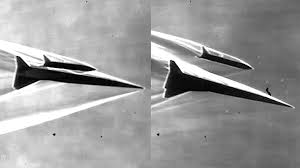China’s latest aircraft wind tunnel completes major test

Beijing: China’s wind tunnel project remains in development which is expected to reshape the country’s future warplanes, and hit another milestone after running a main compressor test, project developers said.
The Aerodynamics Research Institute, under the state-owned Aviation Industry Corporation of China (AVIC), recently conducted a test run on the main compressor of the FL-62 wind tunnel at maximum speed, ‘China Military’, the official English language news website of the Chinese People’s Liberation Army (PLA) reported.
The results showed the compressor performed at its design capability, and the Mach number at the wind tunnel’s core flow indicated its transonic flow field control accuracy had reached an internationally advanced standard, AVIC said.
As the core component of the FL-62 wind tunnel, the six-meter class axial compressor unit is the first of its kind in China. The test marked the initial success of the domestic-built compressor, and will provide support to future wind tunnel calibrations, the statement said.
Weighing 6,620 tons, the 17,000-cubic-meter FL-62 is the country’s first-ever large continuous transonic wind tunnel, according to an AVIC statement in 2018, which called it a “pillar of great power” and a fundamental and strategic facility crucial to China’s aviation industry.
AVIC said the FL-62 would determine the shape of China’s future fighter jets and serve as a backbone for the development of cutting-edge aircraft.Wind tunnels are used to simulate airflow around aircraft models before a real plane is used for an actual flight test. The simulation results help shape and improve an aircraft’s aerodynamic design.
Unlike the unstable and inconsistent airflow of previous Chinese wind tunnels, the FL-62 provides a stable wind field and more precise measurements, military experts said, noting that unnecessary trials and errors can be avoided when designing new aircraft, significantly reducing development periods.
With the help of the new tunnel, China’s future warplanes will be more aerodynamic and have greater stealth capabilities than ever before, experts said.
It may be mentioned that the landmark wind tunnel would reportedly be able to test future-generation aircraft that attain speeds of around 7.5 miles per second.





